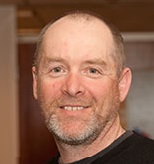
Robert Redmond, Ph.D.
|
Investigator, Assoc Prof (M) Wellman Center for Photomedicine, Mass General Research Institute |
|
Associate Professor of Dermatology (Chemistry) Harvard Medical School |
Research Interests
Research Narrative
Robert W. Redmond, PhD, is an Associate Professor of Dermatology and an Associate Chemist in the Wellman Center for Photomedicine at Massachusetts General Hospital. Dr. Redmond received his BSc (Hons,) and PhD in Chemistry from Paisley College of Technology in Scotland before postdoctoral research fellowships at the Max-Planck Institut für Strahlenchemie (Radiation Chemistry) and the National Research Council of Canada. Dr. Redmond's focus of study spans the fields of photochemistry, photobiology and photomedicine.
At the Wellman Center, his research interests focus on basic understanding and utilization of photochemical reactions in biological environments, such as cells or tissue. Particular interest was focused on how the biological microenvironment impacts on photochemical reaction pathways and the way this can be harnessed for therapeutic purposes. Dr. Redmond's group has studied reaction pathways on a more encompassing temporal and spatial scale using methods like transient absorption spectroscopy and time-lapse microscopy that allows reaction processes to be followed from nanoseconds to days in duration. Photo-oxidation process and propagation of oxidative stress in cells have been of particular interest with the combination of spectroscopy and microscopy providing novel insights on oxidative stress mechanisms. Primary reactive species and their targets lead to secondary reactive species and the relationship between inherent reactivity and spatial range of influence of these different reactive oxygen species has been explored. More recent work had focused on cell-cell signaling and the impact of bystander effects in oxidative stress caused by photosensitization and by ultraviolet light.
The use of light-activated crosslinking of natural proteins for tissue engineering and surgical wound closure purposes remains an important element of Dr. Redmond’s research at Wellman. In collaboration with Dr. Irene Kochevar at Wellman and clinical collaborators from the Department of Surgery at MGH the use of such reactions has been explored for wound closure in peripheral nerve, blood vessel, tendon and colon injury and for tissue engineering in cartilage repair. These light-activated treatments have considerable advantages over other wound closure techniques as there is no foreign body nor closure trauma involved, the process generates a water-tight seal and is non-inflammatory and reduces complications due to scarring
| redmond@helix.mgh.harvard.edu |
| 6177268857 |
|
Thier Building 60 Blossom Street Boston, MA 02114 |
